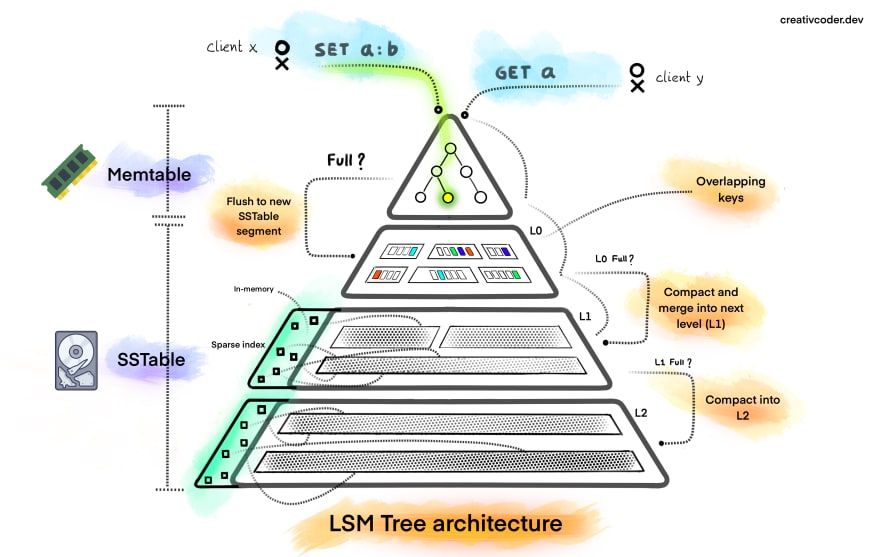In-memory Storage
Incoming write operators are batched and saved in memory in a structure called memtable
The data in the memtable is ordered using the Object Key is is usually implemented as a Binary Tree
After the Memtable reaches a certain size it is sorted & flushed to disk as a Immutable Sorted String Table (SSTable)
The data in SSTable is stored are sorted Key Value pairs. The write operations are all sequential in nature and are vey fast
The new SSTable becomes the most recent segment of the LSM Table
As new data is added new SSTables are created for storing the data
Updating Data
As SSTables are Immutable when the value of an key is changes the value is not changes in the SSTable that contains that key but rather a new entry is added into the newest SSTable and supersede any entries for that key
Delete Data
To perform a delete operation an tombstone marker is added for that key into the latest SSTable
On read when the tombstone is encountered the Database Engine understands that the key needs to be skipped
When we perform an data read operation the data in the memtable is queried first and then each SSTable in the order in which they where created until the required data is found

Merging and Compaction
As more and more data is added and update and delete operations are performed the amount of space that is occupied by outdated data keeps increasing
So solve this issue there is an periodic merging and compaction process that is running in the background
There are two main types of compacting operations that are used by NoSQL databases
Size Tiering: Write Optimized
Level Tiering: Read Optimized
With Compaction the aim is to keep the number of SSTables manageable
Each Level that is created by the merge operation is larger than the previous layer
Compaction is an very IO heavy operation and can greatly slow down the DB if not tuned properly
Most production databases maintain a Summary Table and Bloom Filter to reduce the no. of random IO required to find data